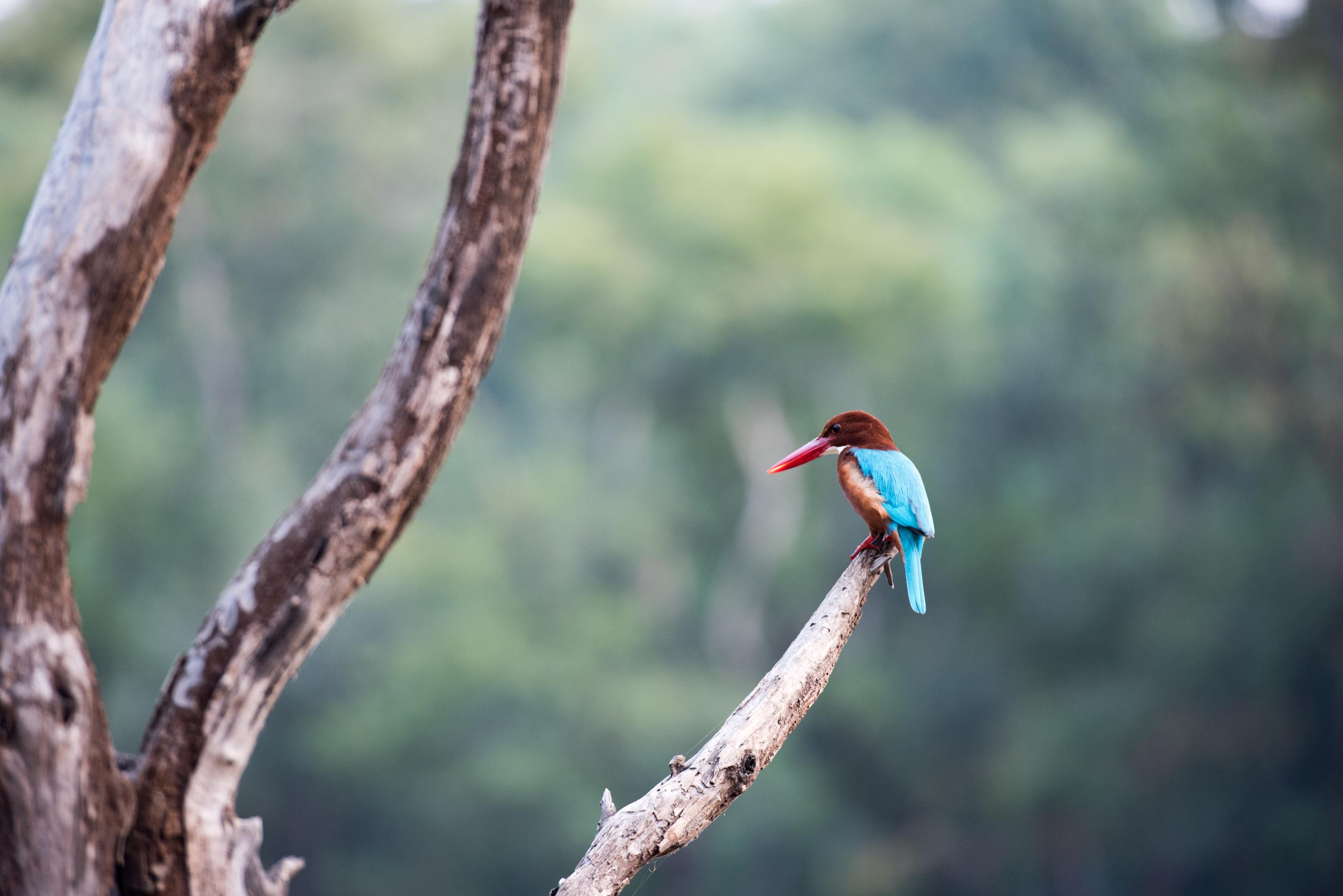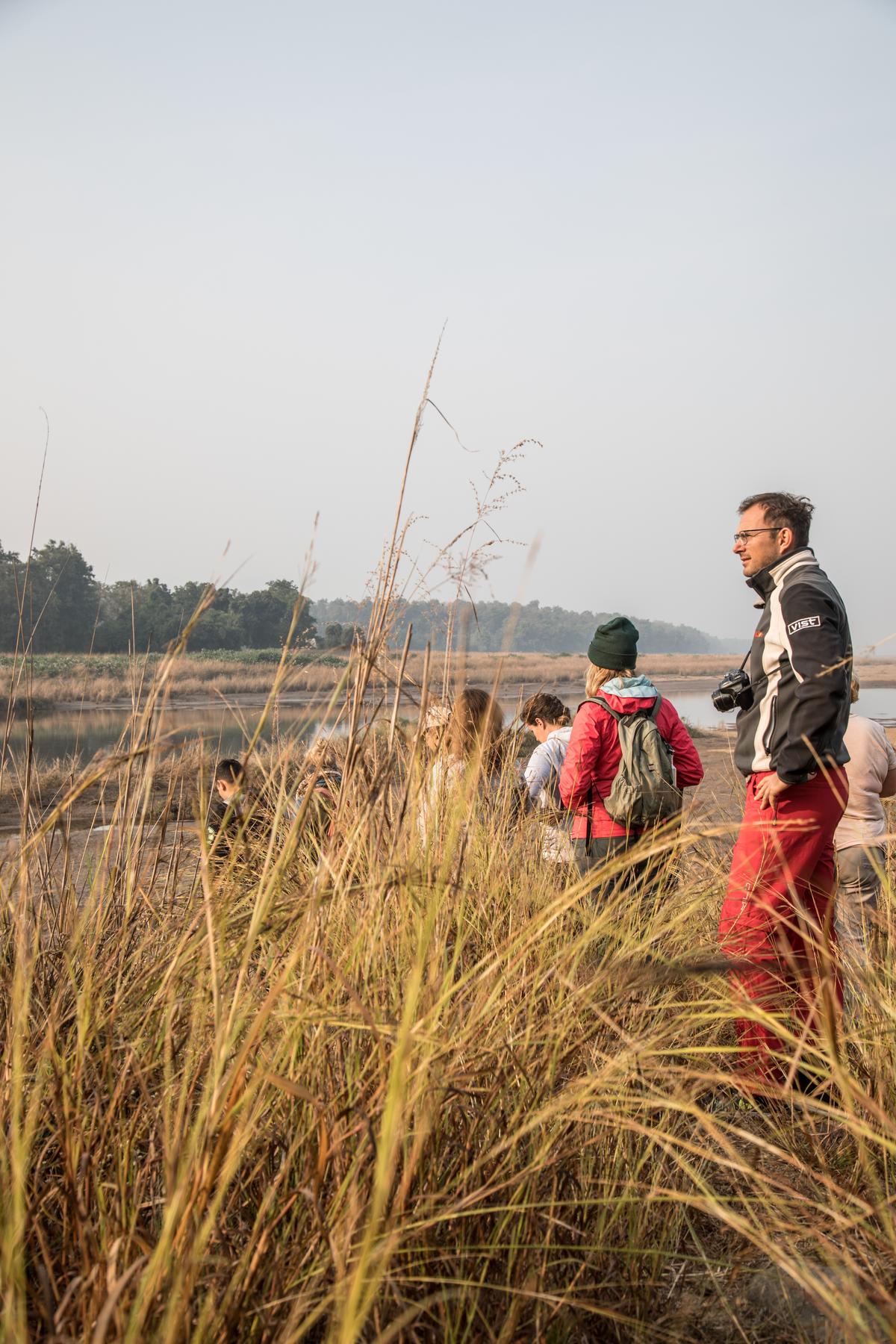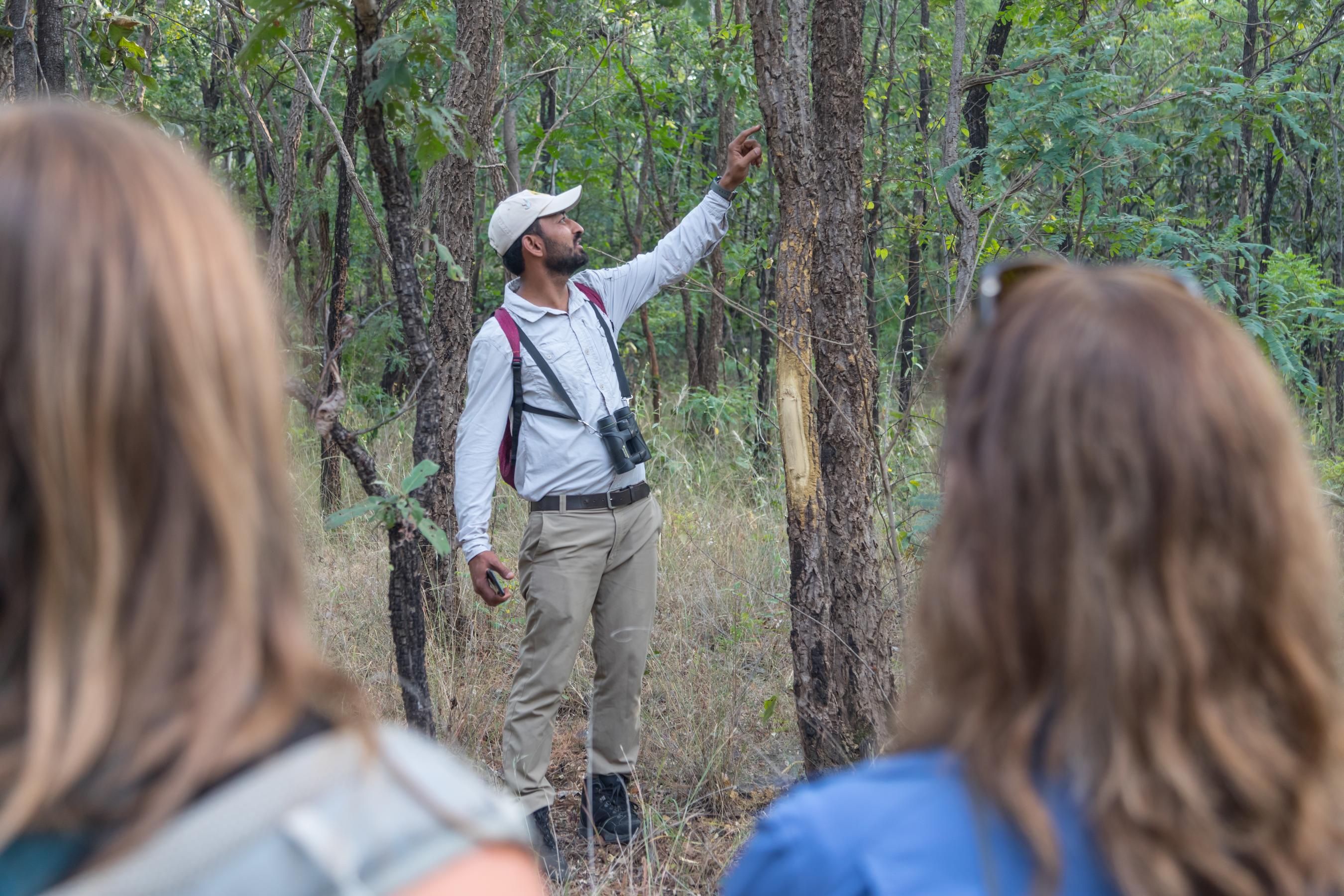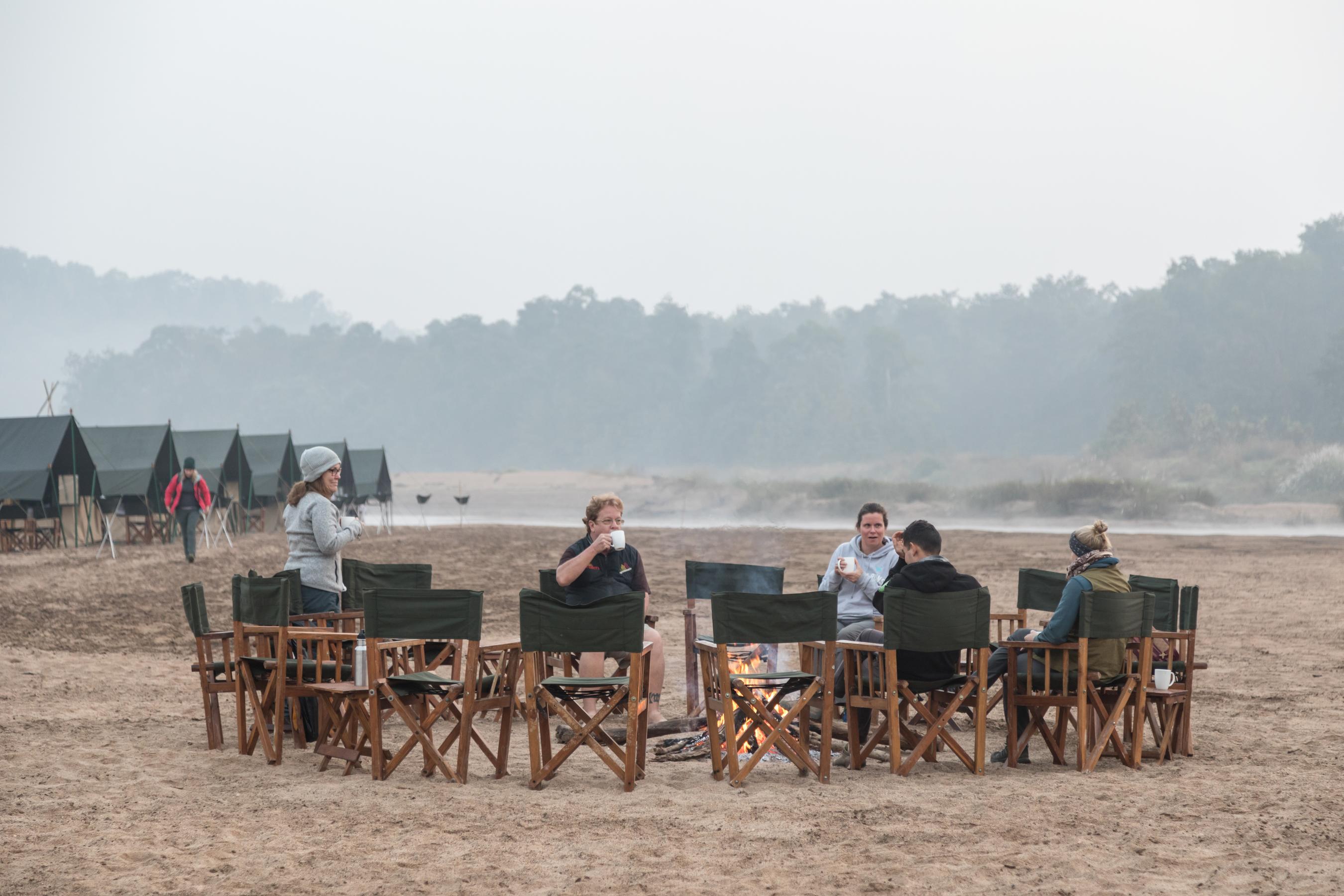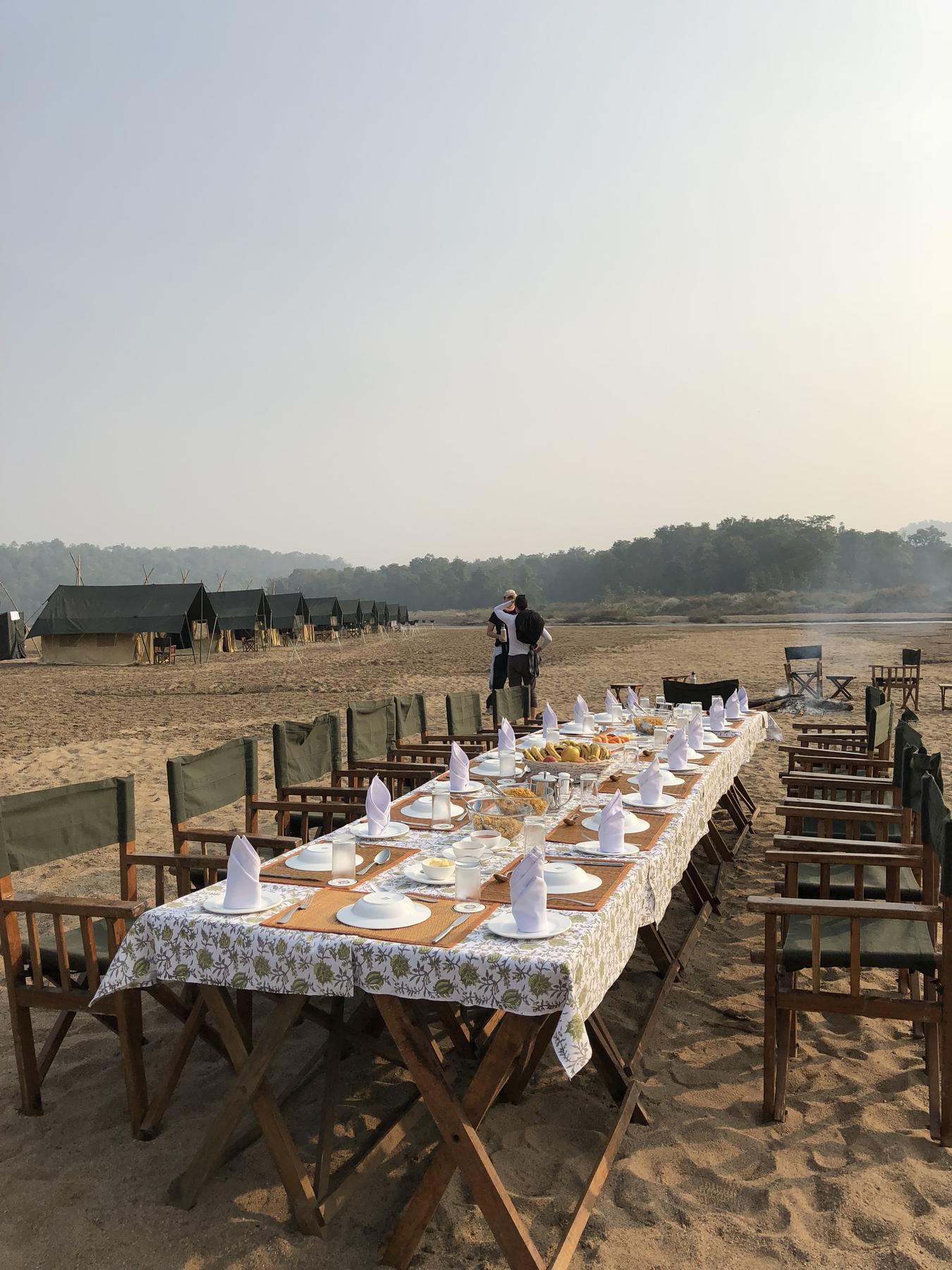In the jungle of Madhya Pradesh, the law of nature rules.
The jungle is a dangerous place. An iridescent scar from a cobra bite on our guide Chinmay’s hand acts as a constant reminder. Even after a year-long recovery process from his snake bite, Chinmay still loves the jungle. “My passion has turned me into a storyteller,” he says. And he has plenty of tales to tell as we hike through the teak forest towards our camp on the banks of the Denwa River in Satpura National Park, Central India.
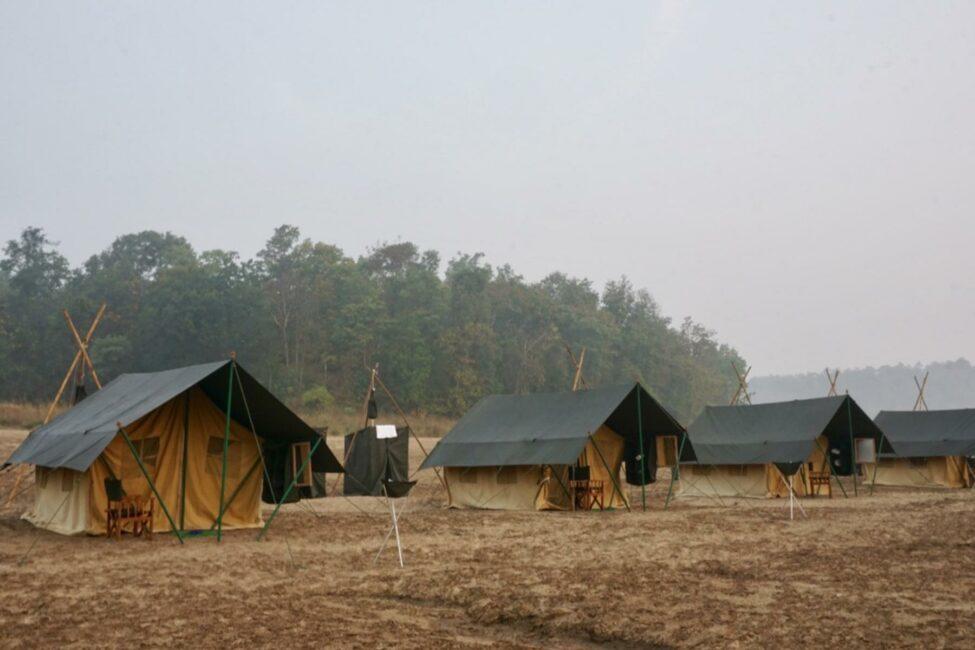
Forging a path through the hilly, sage-colored brush, we dodge venomous orb weaver spiders the size of walnuts webbed between the forest’s leggy trees (only dangerous to other animals, says Chinmay) and keep our ears pricked for a rustle in the tall grasses that flank our trail—it’s viper mating season in the park. We can easily maneuver around these small threats, but a much larger predator also stalks through this forest: the Bengal tiger. Satpura National Park is one of the world’s largest tiger reserves.
There’s no jeep between me and the predator and, even as Chinmay explains to us that tiger-human conflict is very rare, my eyes search the forest for its ribboning black and orange stripes. Home to so many deadly creatures—including sloth bears and leopards—it’s perhaps by no accident then, that India grows 70 percent of the world’s medicinal plants. The country is also the birthplace of Ayurveda, an ancient Vedic mind-body medicine that uses herbal remedies. As we hike, our second guide, Mohan, points at the bark of an Arjun tree that’s used to treat heart disease in Ayurveda and holds up a wood apple—a sweet, flowering fruit with a hard, brown shell—eaten to soothe an upset stomach. We brush up against these healing plants as we continue through the lush, leafy jungle, grasses grabbing at our legs and covering us with their sticky, prickly seeds.
Recommended Fodor’s Video
A steep decline leads us out of the trees and out onto a yawning, sandy plain just as the smoldering pink sun is setting. Ahead, a neat line of pitched canvas tents stand at attention, and beyond, the silvery water of the Denwa River. The Pugdundee Safaris camp crew greets us with steaming warm towels to rid our hands and faces of the day’s sweat. Then, with a siesta in mind, we all make a beeline for our tents. Inside the zippered entrance, a hot water bottle warms a bed dressed in soft white linens, the evenings here providing a chilly respite from the sweltering heat.

Laying down, my feet pulse with the day’s exertion and I drift off easily. I wake to the tangy scent of chicken biryani wafting towards me from the crew’s pop-up kitchen. Outside my tent, two flickering torches staked in the ground glow in the mauve dusk. Our group gathers around a fire that sparks and crackles into the midnight blue sky, savoring this moment in one of the world’s most remote corners over glasses of local white wine. We don’t have time to decide whether we’re disappointed or relieved that we didn’t spot a tiger on our hike today before we’re called to a candlelit dinner at a long table. The crispy, spicy chicken biryani is joined by buttery vegetable paneer, featherlight jasmine rice, and soft, crepe-like naan.
The meal ends with sweet masala chai tea steeped with fresh ginger, cardamom, and cinnamon, and I know I’ll never taste this particular combination of spices again without thinking of tonight. Beyond my tent, the howl of dholes (wild dogs) prowling the river’s moonlit banks serenades me to sleep. The morning brings another decadent spread with tea and freshly-squeezed mango juice. Mist rises off the river as the trill of sapphire-colored kingfishers and lemon-yellow warbler birds signal the jungle’s awakening. After breakfast, we begin the trek back into the forest.
Not far off our wooded path, Chinmay spots a tiger’s fresh footprint in the dirt. The warning calls of langurs rustling and swinging in the forest’s canopy tells us the animal isn’t far off. I hold my breath and we all fall silent, waiting for the illusory tiger to come slinking out of the trees towards us. Although tiger sightings are rare, even in a tiger reserve, the thrill of tracking them and the slow, silent anticipation is part of the allure. After five to ten minutes, the warning calls have died off and it’s clear the tiger has moved on.

I’ll be leaving Central India without a tiger sighting here, but I don’t mind it that way. The sense of humility they teach us is amplified in their absence. “A tiger tests your patience and teaches you to stay calm in any situation,” Chinmay reminds me. These animals aren’t pets to be called or conjured. They’re wild, powerful predators that remind me of my place in this world, a station that should never be above their own.




